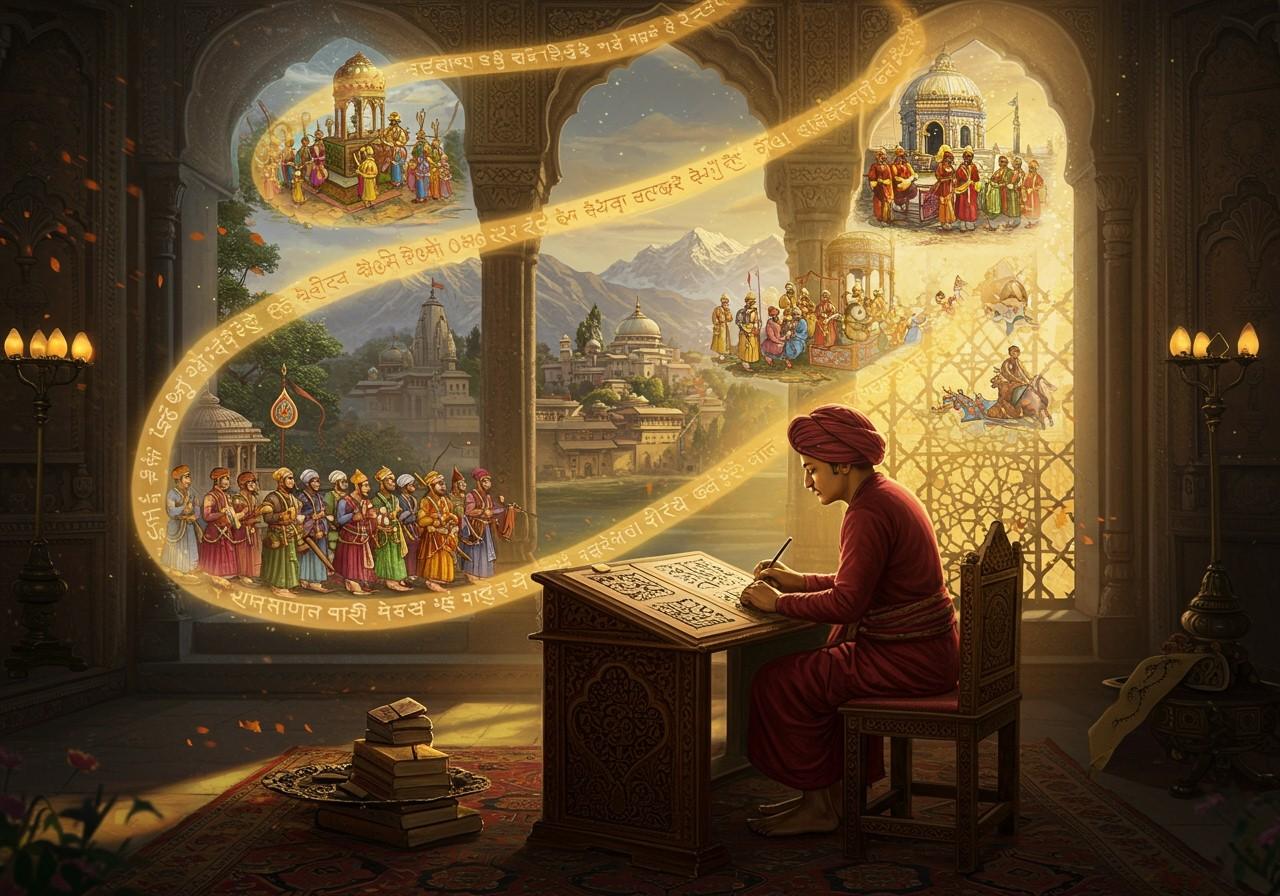
Within the annals of Indian history, the ‘Rajatarangini’ emerges as a significant chronicle, offering a comprehensive narrative of Kashmir’s past. Composed by the Kashmiri Pandit Kalhana in the 12th century CE, this literary work provides invaluable insights into the socio-political and cultural dynamics of the region. Its significance in Indian historiography lies in its meticulous preservation of Kashmir’s rich cultural heritage. Embark on a journey to discover the structure, themes, and historical context of ‘Rajatarangini’ to fully appreciate its comprehensive exploration of Kashmir’s history.
Understanding the Structure
The ‘Rajatarangini’ is structured into eight sections known as ‘Tarangas,’ meaning ‘waves’ in Sanskrit. Each ‘Taranga’ chronicles distinct periods and dynasties, providing a chronological account of Kashmir’s rulers. This unique structure allows for a seamless flow of the narrative, transitioning smoothly from one era to the next. Kalhana’s masterful use of poetic language and literary devices elevates the historical account, transforming it into an engaging and meaningful experience. This intricate structure adds depth and richness to the historical narrative, weaving a tapestry of events with elegance and precision.
Detailed Exploration of the Tarangas
Each ‘Taranga’ or wave in the ‘Rajatarangini’ unveils a unique chapter of Kashmir’s history, narrating the captivating journey of its rulers and their kingdoms.
- Kalhana commences with mythological origins in the first ‘Taranga’, establishing a mystical foundation. This section delves into legends and tales that imbue Kashmir’s past with a sense of profound cultural richness, going beyond mere dates and events.
- The second to fourth ‘Tarangas’ chronicle the dynasties and their political narratives up to the 8th century CE. Kalhana vividly portrays the kings and queens, their triumphs and tribulations, interweaving fact and fiction to create captivating stories of intrigue and drama.
- The fifth ‘Taranga’ introduces Lalitaditya Muktapida, a ruler celebrated for his conquests and architectural achievements. This era represents a golden age of power and prosperity, with Kalhana highlighting Lalitaditya’s strategic brilliance and cultural contributions.
- The sixth and seventh ‘Tarangas’ explore the reigns of subsequent rulers, recounting tales of decline and instability, reflecting the transient nature of power and glory. Kalhana’s storytelling captures the essence of impermanence, a recurring theme throughout the text.
- The eighth ‘Taranga’ culminates in Kalhana’s contemporary era, offering insights into cyclical patterns of history. This section serves as a reflection on the past, providing valuable lessons for future generations.
Key Themes and Analysis
Kalhana’s ‘Rajatarangini’ is replete with themes that continue to resonate with readers today.
- The impermanence of power is a central theme, illustrated through the rise and fall of various dynasties. This serves as a timeless lesson in humility and foresight.
- Ethical dilemmas faced by rulers constitute another crucial theme. Kalhana portrays these moments with sensitivity, emphasizing their enduring relevance.
- The interplay of fate and human agency is intricately woven into the narrative. Kings grapple with destiny while actively shaping their paths through their actions.
- Kalhana’s portrayal of women is noteworthy, presenting them as influential figures in governance and succession.
- Religion and spirituality play a significant role, influencing governance and offering guidance to rulers, reflecting Kashmir’s spiritual diversity.
Historical Context and Relevance
Kalhana’s ‘Rajatarangini’ originated in the thriving cultural landscape of 12th-century India. Kashmir, during this period, flourished as a center for art, literature, and spirituality. Its strategic location attracted diverse influences, enriching its cultural tapestry. The chronicles capture this dynamism, reflecting interactions with Mauryan emperors and Buddhist Kushan kings. Kalhana’s work remains a primary source for understanding Kashmir’s past, offering invaluable insights into political structures, societal norms, and cultural practices. In contemporary times, ‘Rajatarangini’ continues to resonate as discussions on cultural identity gain prominence, contributing to the preservation of Kashmir’s heritage.
How Poojn.in Helps You Connect with Rajatarangini’s Sacred Elements
Poojn.in offers a curated selection of items that connect you with the rich cultural heritage described in the Rajatarangini. Our collection features authentic Chandika Haar (ચંદીકા હાર) and other regional variations of this sacred necklace mentioned in ancient texts. These items are meticulously sourced and verified for authenticity, ideal for personal use and temple offerings.
At Poojn.in, you can discover:
- Chandni Haar (चांदनी हार) in the traditional North Indian style, meticulously crafted with attention to detail and cultural significance.
- Chandrahar (चंद्रहार) crafted according to Marathi traditions, reflecting the rich heritage and craftsmanship of the region.
- Chandra Malai (சந்திர மாலை) adhering to Tamil customs, representing the unique cultural practices and symbolism of the region.
- Various regional versions of sacred necklaces mentioned in historical texts, offering a diverse range of options for those seeking authentic ritual items.
Visit Poojn.in to explore our complete collection. Our customer service team is available to assist you.
Conclusion
The exploration of ‘Rajatarangini’ reveals its multifaceted significance—a historical document, a literary masterpiece, and a cultural treasure. Its legacy endures, inspiring scholars and readers alike to delve into the intricate world it unfolds.
FAQs on Rajatarangini
What is the Rajatarangini?
The Rajatarangini, authored by Kalhana in the 12th century CE, is a historical chronicle of the kings of Kashmir, offering a detailed exploration of the region’s dynastic history.
How is the Rajatarangini structured?
The Rajatarangini is divided into eight books, known as Tarangas. Each Taranga covers a specific period and chronicles the reigns of different rulers in Kashmiri history.
Why is the Rajatarangini important?
The Rajatarangini holds immense significance as it provides a comprehensive account of Kashmir’s history, culture, and traditions. It remains a primary source for understanding the region’s rich past.


